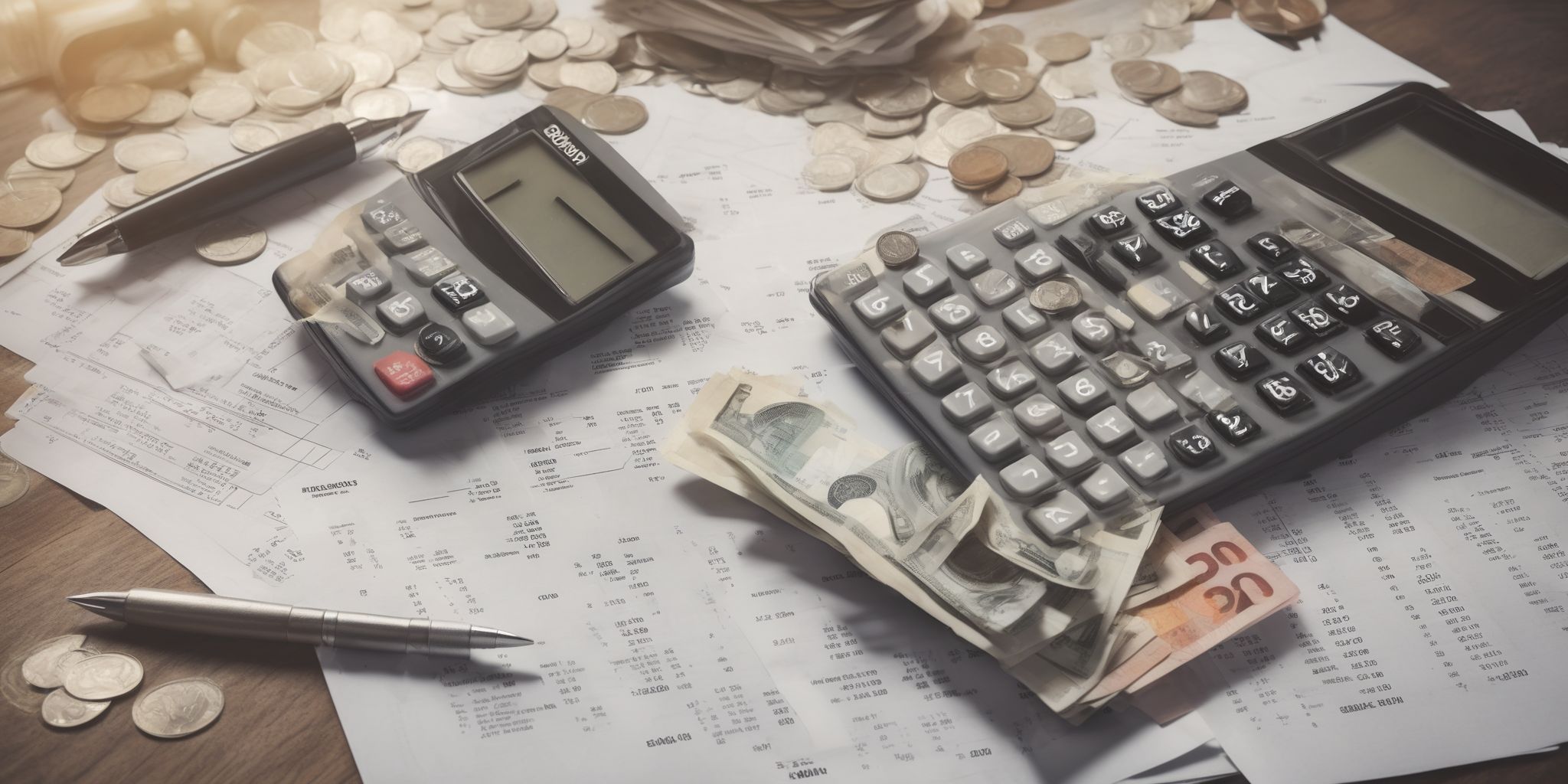What is a Dividend Yield?
Have you ever heard the term "dividend yield" but weren't quite sure what it meant?
Well, you're not alone.
Understanding dividend yield is actually quite simple.
It's a measure of how much a company pays out in dividends each year relative to its stock price.
In other words, it shows you the return you can expect to receive from owning a particular stock.
If you're looking to make informed investment decisions, knowing how to calculate and interpret dividend yield is a must.
Let's dive in and explore this important concept further.
Definition of Dividend Yield
Dividend yield is a financial ratio showing the percentage of a company's stock price paid out as dividends to investors. It's calculated by dividing the annual dividend payout per share by the stock's current share price.
For instance, if a company pays an annual dividend of $1 per share and the stock price is $20, the dividend yield would be 5% ($1 divided by $20).
Investors often seek high dividend yields for a steady income stream and to gauge a company's financial stability and profitability. Mature companies in real estate or utility sectors usually offer higher dividend yields than newer tech or growth companies.
Understanding a stock's dividend yield is crucial for investors to evaluate the potential return on their investment based on the company's performance and dividend payout ratio. By using this metric, investors can make informed decisions on how to allocate their assets in their portfolio for future income growth.
Formula for Calculating Dividend Yield
Using the Dividend Yield Formula
The dividend yield formula can help investors evaluate a stock's income potential. It calculates the percentage of a company's dividend payout compared to its share price.
This metric gives insight into the income investors can expect, aiding in decision-making. Factors to consider are the company's dividend payout ratio, stability of payments, and overall financial health.
Understanding and using the dividend yield formula in financial analysis is crucial. It helps determine ROI, compare investment opportunities, and assess dividend stocks' performance.
Mastering this formula allows investors to make more informed decisions about their portfolio. It's especially useful for mature companies with high dividend yields or industries where dividends are key in asset valuation.
Advantages of Dividend Yield
High Dividend Yield Stocks
High dividend yield stocks are popular among investors looking for income.
There are various factors that contribute to a stock having a high dividend yield.
One factor is the company's dividend payout ratio.
This ratio determines the percentage of the company's earnings paid out as dividends to shareholders.
Investors can evaluate the sustainability of a high dividend yield by examining the company's financial health, cash flow, and earnings growth.
However, investing in high dividend yield stocks carries risks.
For example, a company may reduce or eliminate its dividend payout if its financial performance declines.
It is crucial for investors to diversify their portfolio and carefully assess the performance and future income potential of the companies they invest in.
Older and more mature companies like real estate investment trusts (REITs) and utilities are known for providing high dividend yields due to the stability of their business models.
Total Return with Dividend Yield
The dividend yield of a stock or company is important for investors wanting to maximize their income from investments.
Understanding the dividend yield helps investors see how much income comes from dividends compared to the share price of the asset.
This metric is useful in evaluating the overall performance of a stock, especially in industries with high dividend payouts like real estate or mature companies.
To calculate total return with dividend yield, investors can use a simple formula based on the dividend payout ratio and stock price growth.
This calculation shows how profitable an investment is and guides investors in making informed portfolio decisions.
Knowing how dividend yield affects total return is key for investors aiming to increase their wealth over time.
How to Calculate Dividend Yield
Example of Calculating Dividend Yield
Calculating dividend yield involves looking at the dividend payout and the share price. This ratio helps investors see how much income they might get from their investments.
To find the dividend yield, divide the dividend payout per share by the share price. This shows the percentage return from dividends.
For instance, mature companies like those in real estate or older companies like Mastercard may have high dividend yields because of their stable performance.
Investors can use this ratio to assess the income potential of different stocks in their portfolio.
By comparing dividend yields of companies in various industries, investors can decide where to invest.
Knowing how to calculate dividend yield can help investors understand a security's value and increase their investment income over time.
Related to Dividend Stocks
Motley Fool's Take on Dividend Yield
Investors often seek steady income from dividend stocks. Motley Fool stresses the importance of dividend yield as a key performance indicator for companies. One way to evaluate high dividend yield stocks is by calculating the dividend payout ratio, which compares dividends per share to the share price.
While high dividend yields may seem attractive, there are risks to consider. These include companies straining financially to maintain dividends or missing out on growth opportunities. On the other hand, dividend stocks can bring stability to a portfolio, especially with established companies like Mastercard or real estate investment trusts such as Realty Income.
Understanding the balance between a company's income and dividend payments is crucial for making wise investment choices across all industries. By using the dividend yield formula and factoring in the asset's market value, investors can gauge the potential future income from an investment.
Pros and Cons of Dividend Yield
Understanding REITs, MLPs, and BDCs in Dividend Yields
Real Estate Investment Trusts , Master Limited Partnerships (MLPs), and Business Development Companies (BDCs) contribute significantly to dividend yields.
REITs are required to distribute 90% of their taxable income to shareholders, ensuring a steady income stream for investors seeking high dividend yields.
MLPs, mainly in the energy sector, also offer attractive dividend yields due to their tax-efficient structure.
BDCs invest in debt and equity of smaller companies, resulting in higher dividend yields.
It is important to consider the dividend payout ratio when evaluating these yields, which shows the percentage of earnings paid out as dividends.
Factors like financial health, growth potential, and industry performance help investors make informed decisions on where to invest for future income.
Calculating Dividend Payout Ratio
The dividend payout ratio is calculated by dividing the dividends paid out to shareholders by the company's net income. This metric provides investors with insight into how much of a company's earnings are being distributed to shareholders in the form of dividends.
Analyzing the dividend payout ratio helps investors assess the sustainability of a company's dividend payments relative to its earnings. It shows if a company is over-extending itself by paying out more in dividends than it can afford based on its earnings.
Considering the dividend payout ratio when making investment decisions can help investors avoid investing in companies with unsustainable dividend policies. Mature companies in industries like real estate or utilities tend to have higher dividend payout ratios. Younger companies in rapidly growing industries may reinvest more of their earnings back into the business instead of paying out dividends.
For instance, Mastercard has a low dividend payout ratio due to its focus on growth and innovation in the financial industry. The dividend payout ratio is a key metric in evaluating the performance and financial health of companies in the investing world. It guides investors towards sound investment decisions.
Final thoughts
A dividend yield shows how much cash dividends a company pays out compared to its stock price.
To find it, divide the yearly dividend per share by the stock price and multiply the result by 100 to get a percentage.
Investors look at dividend yield to see how much income they might get from owning a stock.
A high dividend yield could mean the stock is a good deal or that the company is strong enough to keep paying dividends regularly.
FAQ
What is dividend yield?
Dividend yield is a financial ratio that shows how much a company pays out in dividends each year relative to its stock price. It is calculated by dividing the annual dividend per share by the stock price. For example, if a stock pays out $1 in dividends per share and the stock price is $20, the dividend yield would be 5%.
How is dividend yield calculated?
Dividend yield is calculated by dividing the annual dividend per share by the stock price. For example, if a stock pays an annual dividend of $2 per share and its current price is $50, the dividend yield would be 4% ($2/$50 = 0.04 or 4%).
Why is dividend yield important for investors?
Dividend yield is important for investors as it shows the return on investment through dividends. It helps investors determine the income they can expect to receive, allowing them to make informed decisions about potential investments. For example, a higher dividend yield may indicate a more lucrative investment opportunity.
What factors can affect dividend yield?
Factors affecting dividend yield include the company's profitability, dividend payout ratio, and stock price fluctuations. For example, a higher dividend payout ratio or a decrease in stock price can increase the dividend yield.
Is a higher dividend yield always better?
No, a higher dividend yield is not always better. It's important to consider the company's financial stability and growth prospects. A high dividend yield could be a sign of an unsustainable payout or financial trouble. Look for companies with a balance of yield and growth potential.

